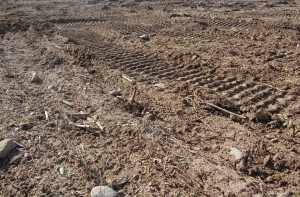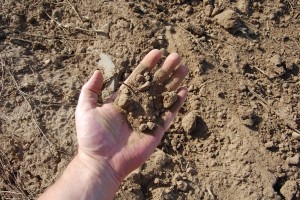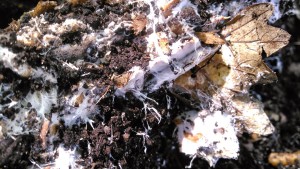When strolling through the park, or hiking through the woods, how often does the average person think about the ground they walk upon? Other than watching where they place their feet in order to avoid stumbling, I would venture to say not much at all. It more than likely never enters their heads to seriously consider what it is that makes the ground, well, ground. A sad thing considering that the ground is where the vast majority of their food comes from. To be fair though, people do think about it a little when some large event takes place such as a leak in an oil pipeline, or a train derailment where ruptured tank cars are spilling their toxic load all over the place, but that’s about it. When such an event happens though, most will just place the blame on some large, faceless corporation as opposed to taking any of the responsibility for these disasters on themselves. Too bad, considering they deserve a much larger share of that pie than they care to admit. It is their unholy addiction to consumerism that is to blame. Making sure they have the latest electronic gadgets, the newest car, or a several thousand square foot house that only two people will live in are a few of the symptoms of this disease. This disease is caused by an utter lack of self control. To be blunt, the ‘me, me, me’ mentality is writing a check that the human species cannot afford to cash.
It has been said that the top six inches of soil is the least understood ecosystem on the planet. When healthy, this thin layer of ‘skin’ contains an incredibly large and diverse amount of life. Unhealthy ‘skin’ is the direct opposite. If you by chance happen to live in ‘farm country’ you will find this diseased form of soil in almost every corn and soybean field you see. There are other crops that exhibit it as well, but these two give some of the best examples. It is solely because of our modern agricultural practices that the soil of these fields has been more or less sterilized for lack of a better word. This chemically intensive form of agriculture should be viewed as nothing more than a virus that needs to be eradicated. Only then will we be able to begin the healing process the land so desperately needs. And by healing the land, we will heal ourselves as well. Farmers have bought into the lies of the agrochemical industry completely. The image below is the result of this type of farming. A barren landscape almost devoid of microbial life. This field once had a very deep layer of rich topsoil, but decades of plowing and mono-cropping have caused it to practically disappear.
 One of the most beneficial forms of life that this topmost layer of soil contains is fungi. Beautiful and wonderful fungi. Fungi are Mother Nature’s very own recycling system. Without it, life as we know it would cease to exist. Their myriad forms are what helps to keep the carbon cycle going. It is their work that helps to create rich soil. However, in order to keep that nice rich soil intact, a no-till method of crop farming needs to be employed. You see, once the plow turns the soil over, it wreaks havoc on the mycelial network that had been created. It also exposes the sequestered carbon in the soil to the elements, where it then oxidizes, thus returning CO2 into the atmosphere. When this is taken into account, it can be safely argued that modern farming practices release more ‘greenhouse’ gases into the atmosphere than all of our power plants combined. Thousands of years of carbon sequestration gone in only a few short decades.
One of the most beneficial forms of life that this topmost layer of soil contains is fungi. Beautiful and wonderful fungi. Fungi are Mother Nature’s very own recycling system. Without it, life as we know it would cease to exist. Their myriad forms are what helps to keep the carbon cycle going. It is their work that helps to create rich soil. However, in order to keep that nice rich soil intact, a no-till method of crop farming needs to be employed. You see, once the plow turns the soil over, it wreaks havoc on the mycelial network that had been created. It also exposes the sequestered carbon in the soil to the elements, where it then oxidizes, thus returning CO2 into the atmosphere. When this is taken into account, it can be safely argued that modern farming practices release more ‘greenhouse’ gases into the atmosphere than all of our power plants combined. Thousands of years of carbon sequestration gone in only a few short decades.
 Soil that should be teeming with life simply falls through my fingers to become nothing more than dust in the wind. The greed and arrogance of mankind is what has brought about this wanton destruction of the environment.
Soil that should be teeming with life simply falls through my fingers to become nothing more than dust in the wind. The greed and arrogance of mankind is what has brought about this wanton destruction of the environment.
 This is what healthy soil should look like. Filaments of fungal hyphae permeating soil rich with organic debris to create webs of mycelium. Once these fungal allies are finished with their work, we are left with rich soil full of sequestered carbon. It’s time we get back to working with nature and not against it.
This is what healthy soil should look like. Filaments of fungal hyphae permeating soil rich with organic debris to create webs of mycelium. Once these fungal allies are finished with their work, we are left with rich soil full of sequestered carbon. It’s time we get back to working with nature and not against it.


